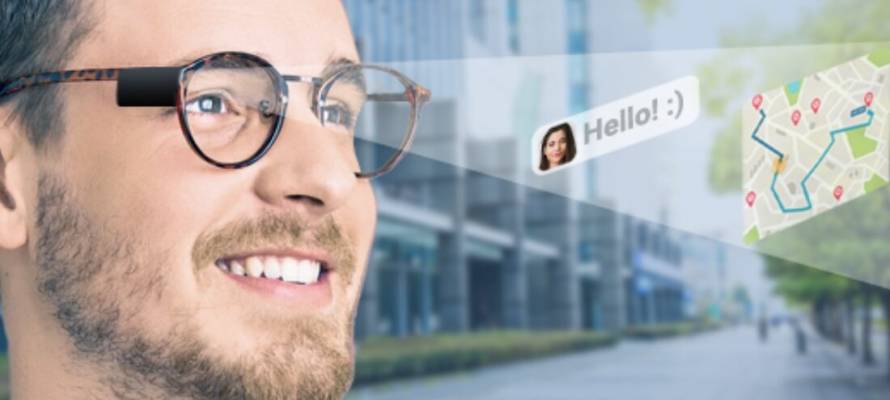The idea of wearing a computer instead of lugging one around is certainly appealing.
By Abigail Klein Leichman, ISRAEL21c
We all know what happened to Google Glass.
The idea of wearing a computer instead of lugging one around was certainly appealing, but Glass was doomed by technical glitches and a geeky design.
Nevertheless, the “big five” tech corporations — Apple, Amazon, Meta, Microsoft and Google (Alphabet) haven’t given up on the dream of smart glasses that could make smartphones obsolete. They just haven’t found solutions for all the challenges involved.
It takes a big helping of Israeli chutzpah to step into the sandbox with those giants. Yet that’s what aerospace engineer Edu Strul, optics expert Joshua Gur and ophthalmic surgeon/intraocular implantable devices inventor Isaac Lipshitz have done with EyeJets.
“We are developing smart glasses that are different because the others project the digital data onto the lenses [of the glasses] while we are projecting the data directly onto the retina,” says Strul.
In other words, the eye is the screen.
Projecting onto the retina is not a novel technology. However, says Strul, “If I project a movie onto your retina, you can’t see it well because your eye moves all the time.”
EyeJets solves that problem with a novel eye-tracking technology to ensure that the image is always directed to the center of the retina’s field of view, the macula.
Projection with eye tracking is unique and Strul can prove it: After comparing the technology to everything currently available, the US Patent Office approved EyeJets’ application in September 2021 without rejecting any of the 39 claims.
“We think this VRD — virtual retina display — is the solution for many problems that all the other companies with more budget and engineers haven’t solved,” he tells ISRAEL21c.
Will people wear them?
To look at EyeJets’ preliminary prototype, you’d think nobody would wear these specs.
But to ensure that the finished product will avoid the Google Glass design fail and the clunkiness of Oculus AR glasses, EyeJets has been working with a large eyeglass company from day one.
“We know the glasses must be nice, and they must be compact so you can walk around regularly as you read your emails,” Strul assures us.
EyeVis is intended to be available for people who need prescription lenses and people who don’t. The projection capability can be switched off, for instance when the user is driving.
The Modi’in-based company is raising a small funding round on the Pipelbiz platform to finance a working prototype, EyeVis1, by the end of next year. A Series A round is planned after the technology is presented in November at the Web Summit in Lisbon.
Strul and Gur began the company in 2017 with a government budget for a military project, which they completed and then realized the potential for the eye-tracking tech in the civilian market. Still, they believe their eyeglass system can have medical, cyber and military applications.
“This is something that will change the way we see and interact with computers,” says Strul.
While EyeVis1 could replace your TV and computer screens, the future EyeVis2 is intended to replace your smartphone by incorporating functionalities including phone calls, photography and even texting via dictation or a virtual keyboard.
“In a few years there will be no smartphones, only smart glasses. All the big companies are saying that, not just me,” says Strul.
